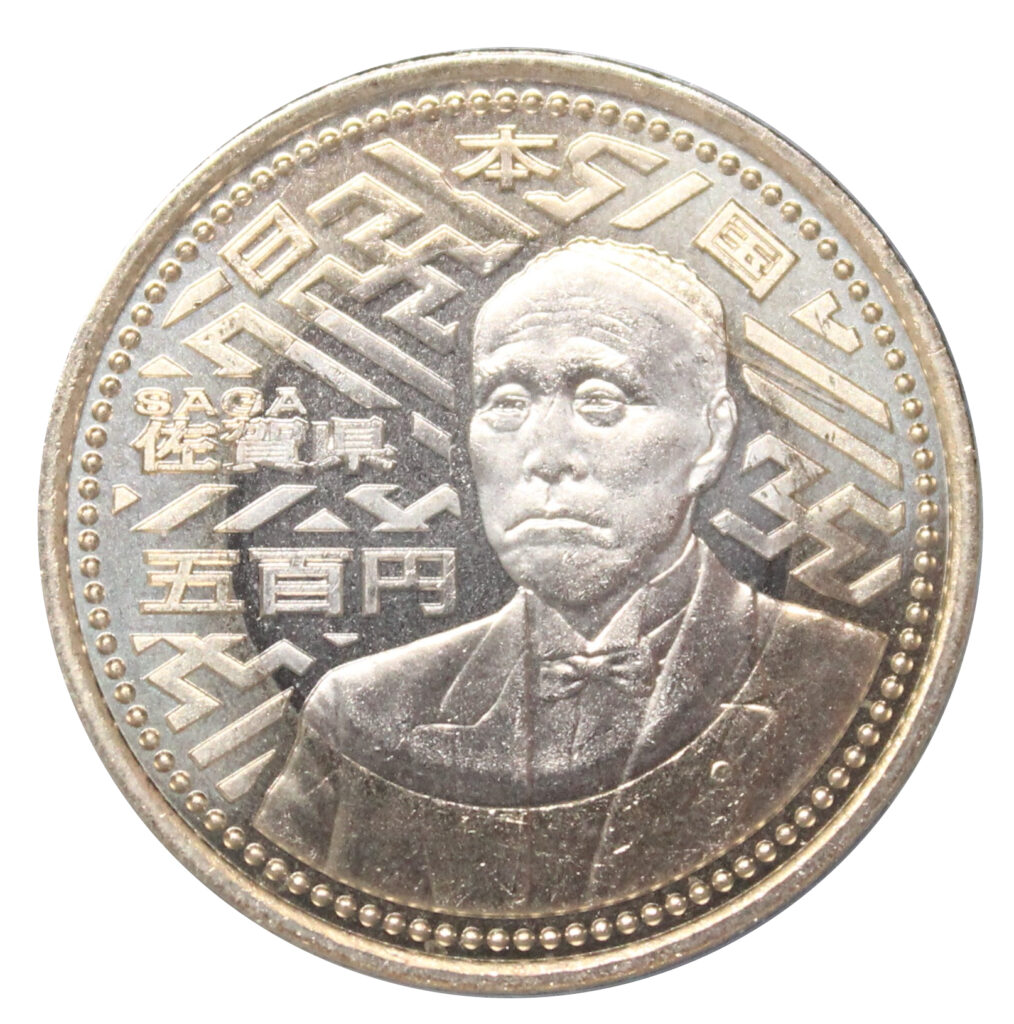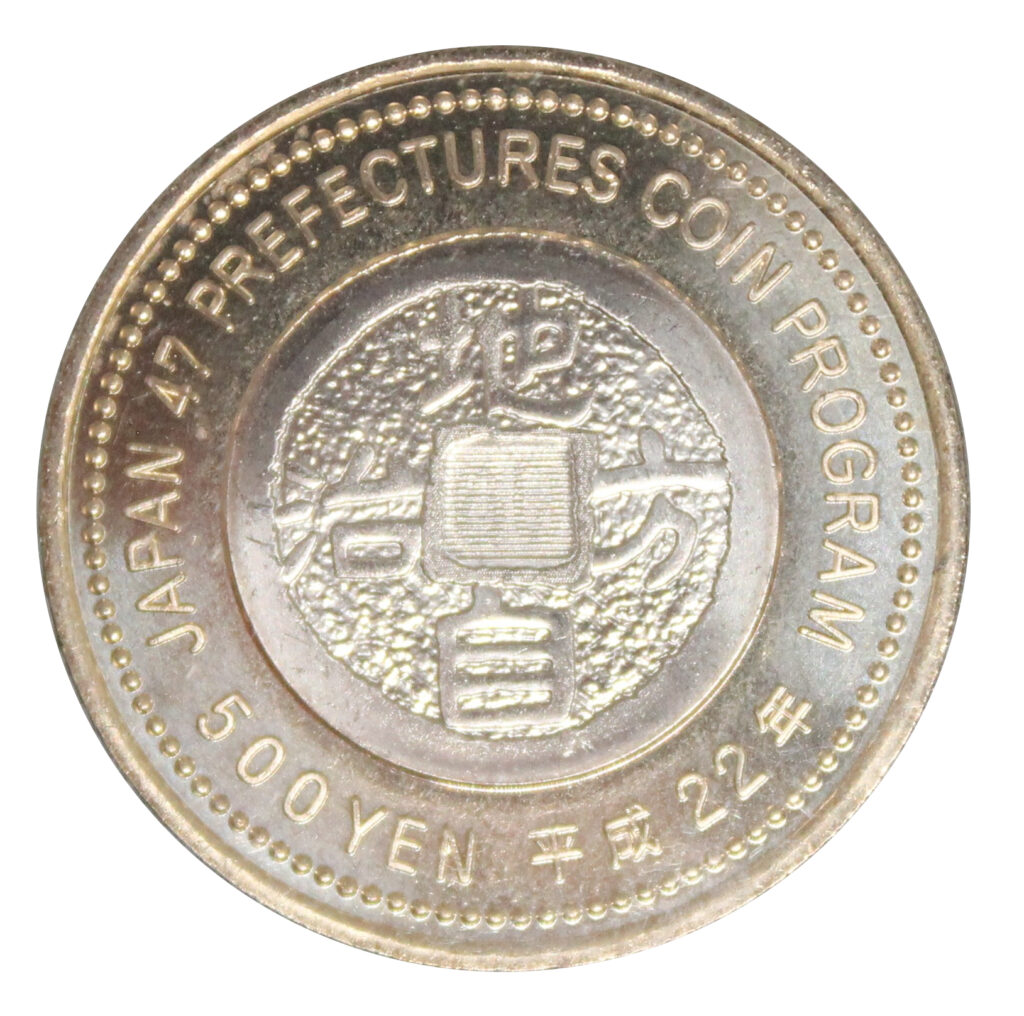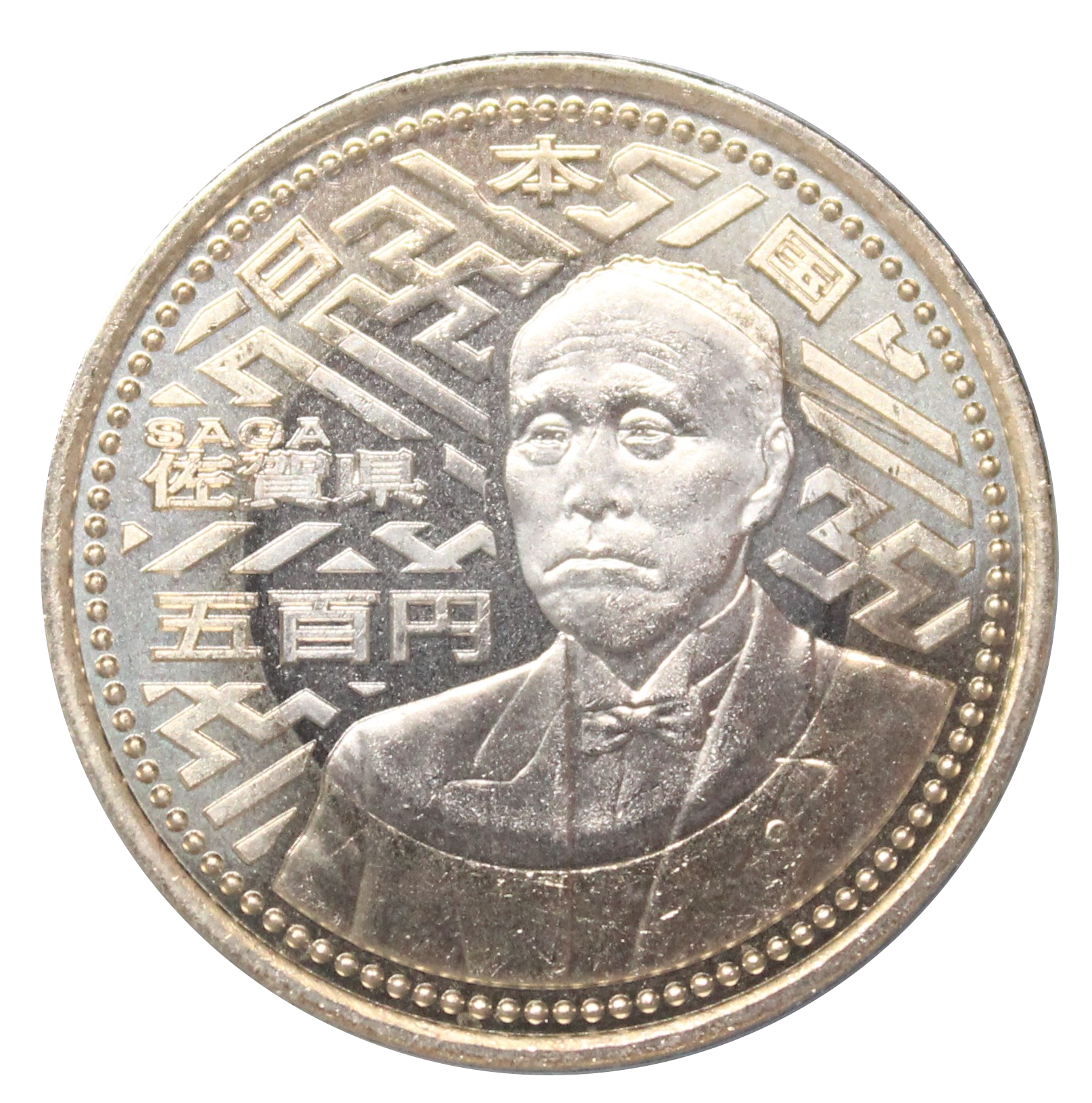

| Material | Nickel-brass, Cupronickel and Copper |
| Composition | Copper 750 Zinc 125 Nickel 125 |
| Weight | 7.1g |
| Diameter | 26.5mm |
| Year of Production | 2010 |
A 500 yen coin made to commemorate the 60th anniversary of the enforcement of the Local Autonomy Law.
There are 47 types, the same as the number of prefectures in Japan.
It is made by combining two technologies: “Cladd,” in which another type of metal plate is inserted between two metal plates, and “Bicolor,” in which another metal is placed in a disk. “Baikara Clad
There are jagged edges on the sides, and only four places are shaped differently from the rest.
The reverse side is the same.
The design imitates the coins of the Edo period.
It is written in kanji as “local Autonomy” in four characters.
The year and “JAPAN 47PREFECTURES COIN PROGRAM” are engraved.
The obverse has a different design for each prefecture.
The SAGA type depicts “Saga Nishiki (Kashima Nishiki)” and “Okuma Shigenobu”.
Saga Nishiki is a traditional textile craft of Saga Prefecture. It is made by using thin strips of gold or silver leaf-covered washi paper or lacquered washi paper cut into strips as the warp threads and dyed silk thread as the weft threads, and it still has many enthusiasts today.
It was widely produced in the territory of the Kashima domain in Saga during the Edo period, and is one of the theories about its origin, so it is also called Kashima Nishiki.
Okuma Shigenobu (1838-1922) was a politician from Saga who was active from the Edo period through to the Taisho period.
During the Meiji period, he contributed to the establishment of the new government and served as Prime Minister twice, playing an active role as a central political figure for a long period of time.


